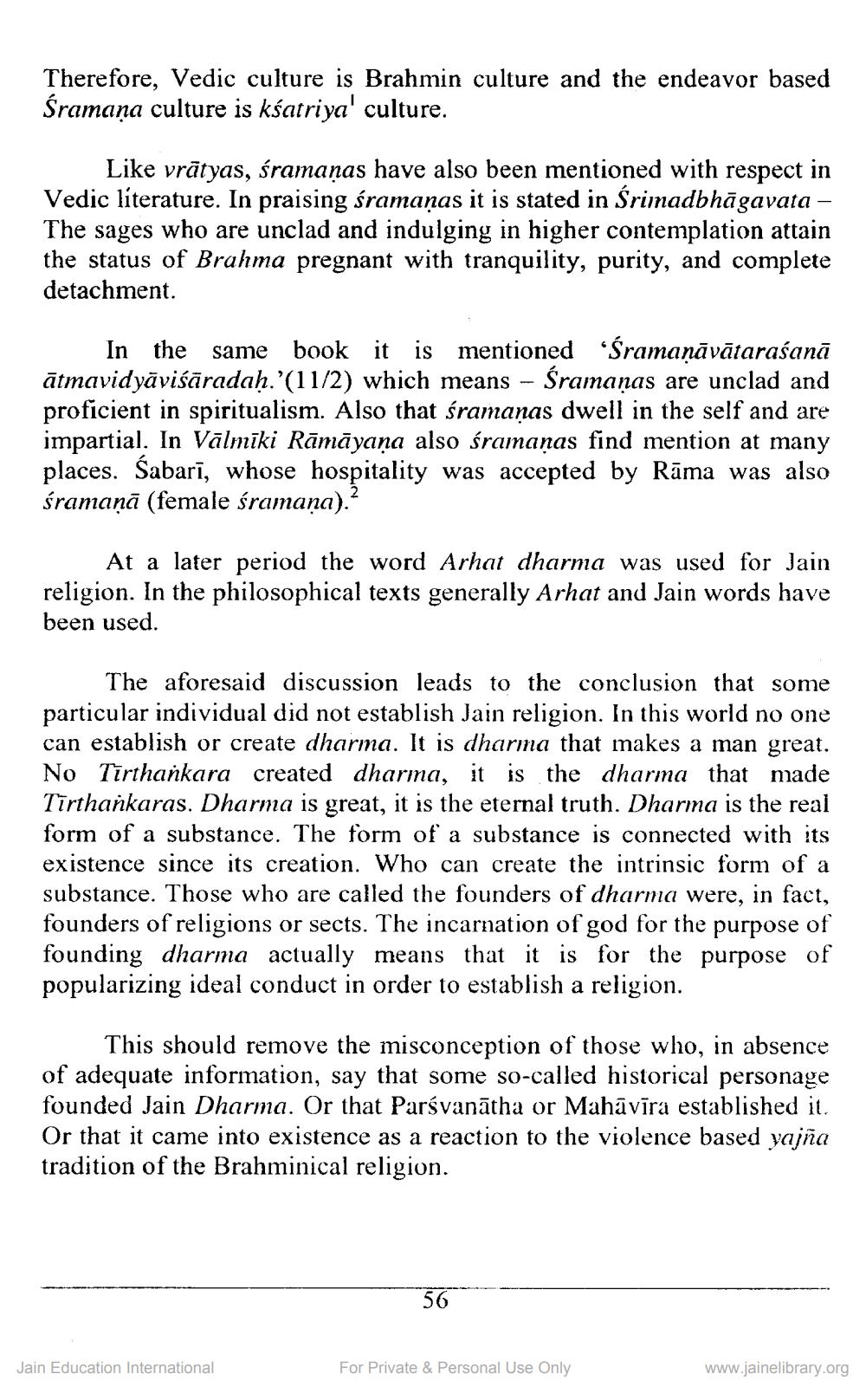________________
Therefore, Vedic culture is Brahmin culture and the endeavor based Śramaņa culture is ksatriya' culture.
Like vrātyas, śramaņas have also been mentioned with respect in Vedic literature. In praising śramaņas it is stated in Srimadbhāgavata - The sages who are unclad and indulging in higher contemplation attain the status of Brahma pregnant with tranquility, purity, and complete detachment.
In the same book it is mentioned 'Śramanāvātaraśanā ātmavidyāviśāradaḥ.'(11/2) which means - Śramaņas are unclad and proficient in spiritualism. Also that śramaņas dwell in the self and are impartial. In Vālmīki Rāmāyaṇa also śramaņas find mention at many places. Sabarī, whose hospitality was accepted by Rāma was also śramaņā (female śramaņa).?
At a later period the word Arhat dharma was used for Jain religion. In the philosophical texts generally Arhat and Jain words have been used.
The aforesaid discussion leads to the conclusion that some particular individual did not establish Jain religion. In this world no one can establish or create dharma. It is dharma that makes a man great. No Tirthankara created dharma, it is the dharma that made Tīrthankaras. Dharma is great, it is the eternal truth. Dharina is the real form of a substance. The form of a substance is connected with its existence since its creation. Who can create the intrinsic form of a substance. Those who are called the founders of dharma were, in fact, founders of religions or sects. The incarnation of god for the purpose of founding dharma actually means that it is for the purpose of popularizing ideal conduct in order to establish a religion.
This should remove the misconception of those who, in absence of adequate information, say that some so-called historical personage founded Jain Dharma. Or that Parsvanātha or Mahāvīra established it. Or that it came into existence as a reaction to the violence based yajña tradition of the Brahminical religion.
56
Jain Education International
For Private & Personal Use Only
www.jainelibrary.org




